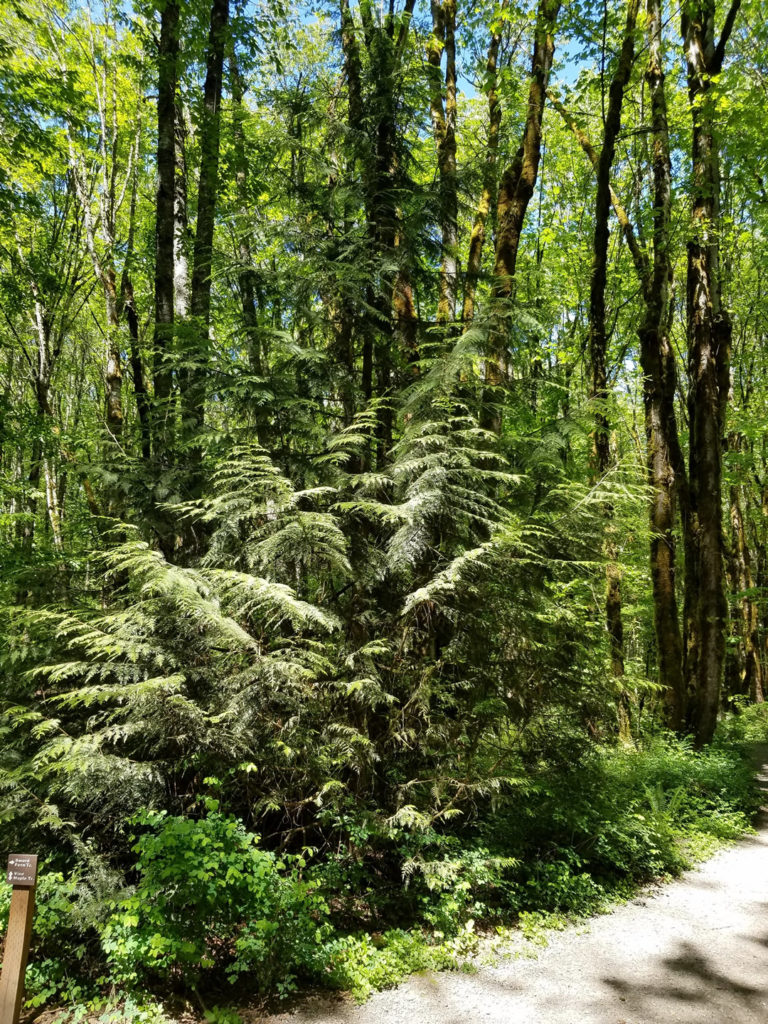 Western Red Cedar, Thuja plicata
Western Red Cedar, Thuja plicata
Cupressaceae – Juniper family
The Greek name for juniper is “thuja.” “Plicata” indicates the plaited appearance of the shoots. Despite its name, this tree is not a true cedar of the Old World genus Cedrus.
Western red cedar thrives in soggy ground that would suffocate the roots of Douglas fir and Hemlock. Stately red cedar trees are more commonly found along riverbanks, in moist bottomlands, and near seeps. Old growth trees can top 200 feet and be over 10 feet thick at the base during their 1000-year life span. The distinctive trunk is broad for support at the base, but tapers gracefully upwards, accentuated by long strips of red-brown bark. The drooping, flattened branchlets are covered with scale-like leaves. The leaves have a sweet aromatic smell when crushed. Small ovoid cones contain about six pairs of scales each bearing two to three light winged seeds.
Western red cedar was the tree of greatest utility to Native peoples of the Northwest. The wood splits cleanly into planks used for fishing platforms, walls, roofs, and partitions of plank houses. Perhaps the most impressive canoes in the world are those honed from western red cedar logs. Bark fibers were tightly woven into platters, baskets, mats and rain hats. The soft finely shredded bark fibers were used as towels or to line cradles. Longer fibers were woven into fishnets and sew to make skirts and capes. The red cedar buds or leaf tips were used by some Native groups for toothache when chewed, as a gargle, or as a cough remedy when boiled (5-83).
Information courtesy of “The View From Springbrook Park; an Illustrated Natural History” by Ed Chinn.
Photos taken by Laura Tanz
Sponsored by Friends of Springbrook Park; Lake Oswego, OR